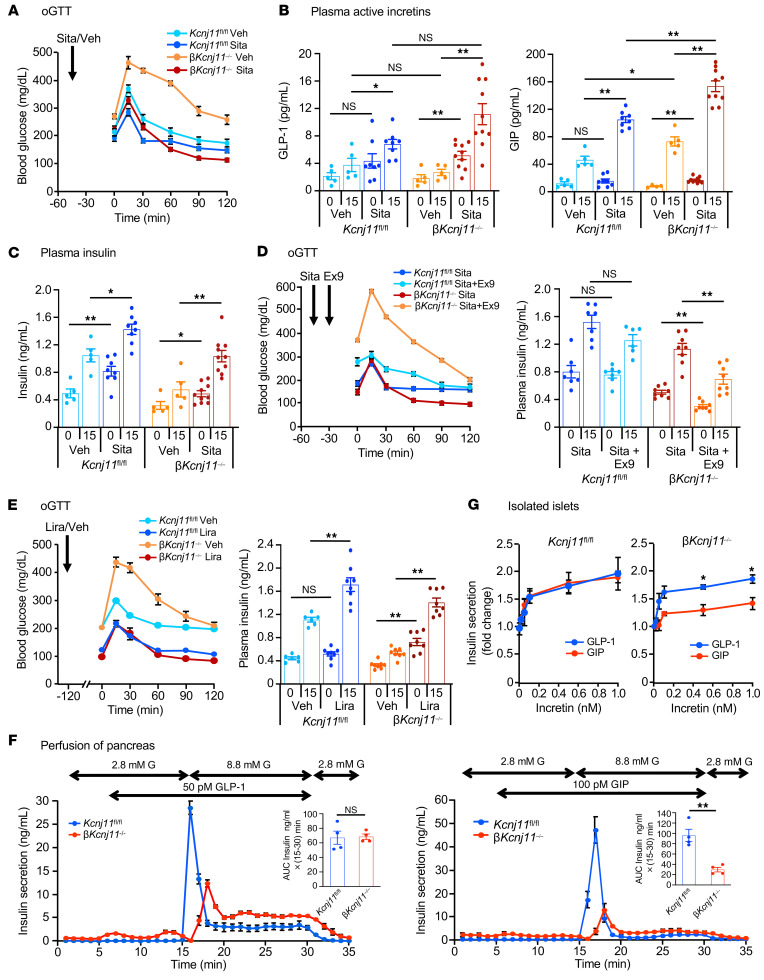Figure 2. GLP-1– but not GIP-based treatment restores glucose tolerance and insulin secretion in βKcnj11–/– mice.
(A) Effects of sitagliptin (Sita) on oGTT. Sita (2 mg/kg) was orally administered to mice 45 minutes before glucose challenge (1.5 g/kg) (n = 5–8 mice per group). Veh, vehicle (water). (B) Plasma active incretins before and 15 minutes after glucose challenge shown in A (n = 5–10 for each point). (C) Plasma insulin before and 15 minutes after glucose challenge shown in A (n = 5–10 for each point). (D) Effects of exendin-9 (Ex9) on blood glucose and plasma insulin during oGTT following sitagliptin treatment. Sitagliptin (orally) and exendin-9 (50 μg/kg, i.p.) were administered 45 minutes and 15 minutes, respectively, before glucose challenge (n = 6–10 per group for blood glucose; n = 7–8 for each point for plasma insulin). Vehicle, water. (E) Effects of liraglutide (Lira) on blood glucose and plasma insulin. Liraglutide (50 μg/kg, i.p.) was administered to mice 120 minutes before glucose challenge (n = 7–12 per group for blood glucose; n = 6–8 for each point for insulin). Vehicle, saline. (F) Effects of incretins on insulin secretion from perfused pancreases. Total amount of GLP-1IIS or GIPIIS over a period of 15–30 minutes is expressed as AUC, in insert (n = 4 for both groups). (G) Dose-dependent effects of incretins on insulin secretion from pancreatic islets. Amplifying effects of each incretin at the indicated concentrations (0, 0.05, 0.1, 0.5, and 1 nM) (n = 6–8 for each point). Statistical analyses were performed by 2-way ANOVA followed by Dunnett’s post hoc test (A–D, G) or by 2-tailed Student’s unpaired t test (F). Data are represented as mean ± SEM. *P < 0.05; **P < 0.01.

